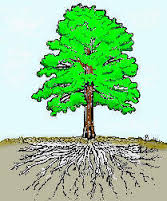Phytoremediation is from Ancient Greek, phyto meaning “plant”, and Latin remedium meaning “restoring balance”. It refers to the technology that use living plants to clean up soil, air, and contaminated water with hazardous chemicals. It is a green technology that uses plants systems for remediation and restoration and also encompasses microbial degradation in rhizosphere as well as uptake, accumulation, and transformation in the plant.
Phytoremediation can be applied as long as the concentration of the pollutant is within the appropriate range of concentration, which shall not be too high, since it may cause phytotoxicity to the plant. Current methods mainly remove an transport to Resource Conservation and Recovery Act (RCRA) land fill or pump and treat type systems.
Processes Involve in Phytoremediation are
1. Phytoextraction – extraction of contimanant by the plant. i.e., Uptake and concentration of pollutants from the environment into the plant biomass.
2. Phytodegradation – Plant metabolize of contaminants
3. Rhizodegradation – Plants promote microbial activity that breaks down contaminants i.e microbial metabolism of contaminants in the rhizosphere
4. Phytovolatilization – Uptake, and transpiration i.e. removal of contaminants from the soil and subsequent release to the atmosphere
Pros:
1. Cost effective when compared to other more conventional methods.
2. “Nature” method and more aesthetically pleasing
3. Minimal land disturbance and low maintenance
4. Reduces potential for transport of contaminants by the wind and reduces soil erosion
5. Hyperaccumulaters of contaminants means a much smaller volume of toxic waste.
6. Multiple contaminants can be removed with the same plant.
Cons:
1. Slow rate and difficult to achieve adequate levels of decontamination.
2. Potential phase transfer of contaminant.
3. A possibility of contaminated plants entering the food chain.
4. Disposal of plant biomass might be an RCRA regulated hazard substances.
5. Possible spread of contaminant through falling leaves.
Phytoremediation is an environmentally friendly method to remediate contaminated areas. However, the mechanism of the metal accumulated in the plant should be clearly studied before application.

